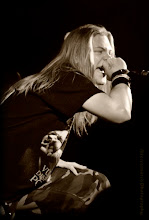I have decided to use the benifits of humour to my advantage to help people learn about how the slime molds life cycle works for my animation. I like to think that by using a quirky style you can provide entertainment through learning, therefore relate to all ages.
In the first storyboard we see the enviroment that the slime mold is growing in, a rural area with a tree, river and log. The log has a slime mold developing on it, which the camera zooms into during the animation. We go so far into it that we can see the microscoping fruiting body of the slime mold.
The fruiting body stands there as if something is about to happen, but not quite sure what. He then starts to choke, throwing up the spores which fly out of his "mouth".
The spore releases his "parachute", and becomes an amoeba.
The amoeba flys towards a large mound of others like himself, which he sticks onto and becomes one with.
The collective of cells squeeze together in syngamy until they start to reproduce and form zygotes, then performing meiosis by becoming more duplicates of the original amoeba cells. This continues and we see the collective bundle become a new fruiting body.
The camera focuses on the new fruiting body, which in turn zooms out back to the landscape of the tree, which now is covered in gooey slime molds.
